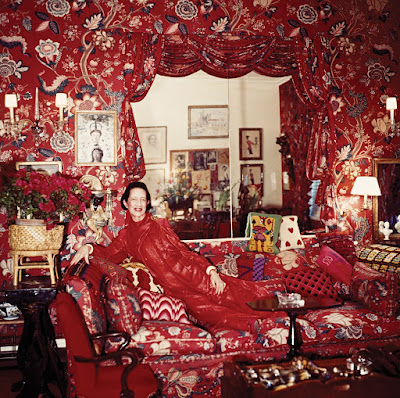YOHJI YAMAMOTO DEFINES HIS FASHION FASHION PHILOSOPHY
PARIS, Oct. 21— Yohji Yamamoto may stand barely five feet tall, but his effect on world fashion in the last two years has been enormous. Many people at the recent Paris showings said he is the best of the new Japanese designers - a distinguished group that includes Rei Kawakubo for Comme des Gar,cons, Issey Miyake and Kansai Yamamoto (no relation). Some say he is the best anywhere. His fans use his first name when they discuss his clothes, a sure sign that a designer has arrived. Fashion experts and retailers are often inclined to exaggerate, but Mr. Yamamoto's influence is hard to dispute.'
'When I started designing clothes 12 years ago, I knew there were two ways,'' Mr. Yamamoto, who is 40 years old, said in an interview. ''The first is to work with formal, classical shapes. The other way is to be very casual. That's what I decided on, but I wanted a new kind of casual sportswear that could have the same status as formal clothing. So I use fabrics that are heavy-duty, like army fabrics, or just look heavy-duty, to give the kimono shape a new energy.'' He spoke in English as he sat in his spare white and black showroom near the Les Halles district of Paris. The room, cavernous and brightly lighted, was filled with buyers, trying clothes on from his spring collection.
Loosening the Silhouette
What Mr. Yamamoto and the other Japanese designers have accomplished is a general loosening of the female silhouette. This they have done with large, loose-fitting garments, such as jackets with no traditional construction and a minimum of detail or buttons; dresses that often have a straight, simple shape, and large coats with sweepingly oversized proportions. In general, there is a generosity of proportion and size, often with the kimono as a starting point of design, and fabrics that range from fresh cottons to robust linens to heavy wools. All of this came at a time when women's clothes by most traditional designers were moving in the opposite direction, toward a snugger fit and formality.
For fall, one of Mr. Yamamoto's most successful coats is made of a pressed wool in mustard and brown that has the look of great weight but is as light as a raincoat and has no definable shape, except perhaps a generic coat shape. Worn with simple Western day clothes, a pair of black trousers, a black shirt and black heels, it is one of the chicquer designs this season. Moreover, it can be worn during the day or at night.
It is also a good example of the flexibility of Mr. Yamamoto's clothes because it shows that they work best when they are mixed with Western clothing. When the new clothing from Japan is worn on the street in exactly the same way it is shown on the runway, the result often becomes a shapeless heap of fabric. Mr. Yamamoto is aware of that problem.
''I've become very nervous myself about the volume of the Japanese clothing and the kimono shape, so loose and oversized,'' he said. ''If you go too far with a kimono, the final conclusion is just fabric. That is not fashion. The kimono is easy to copy but difficult to make work. It must be done in a technical way, or it becomes sloppy, too big and too baggy. That is why my new collection has shapes that are narrower. I wrapped the body very tight.''
Mr. Yamamoto also continues to break new ground with his men's clothes. His men's spring collection, for example, has sports jackets, in navy or black, that are loose-fitting, with generous, rounded shoulders and gored backs. They are made of 90 percent cotton and 10 percent polyurethane and, as a result, have the stretch of running clothes. There are ankle- length classic trench coats, in tan or black cottons, with shoulders extended by tailoring, not padding. The trousers, some with elastic waists, are loose-fitting. And there are black cotton pullover shirts with zip collars. What strikes one about Mr. Yamamoto's men's clothes is that they would work as well on women.
Men's Shirts, Women's Skirts
A number of women have, in fact, been buying Mr. Yamamoto's men's clothes in New York at the Charivari Workshop, Columbus Avenue at West 81st Street. According to Jon Weiser, who will be adding a 1,900-square-foot Yohji Yamamoto boutique to his next Charivari store, scheduled to open this fall on West 57th Street, women shop the Yamamoto line in his store by moving back and forth between the men's and women's sections, mixing men's shirts with women's skirts.
''I think that my men's clothes look as good on women as my women's clothing,'' said Mr. Yamamoto. ''And more and more women are buying my men's clothes. It's happening everywhere, and not just with my clothes. Men's clothing is more pure in design. It's more simple and has no decoration. Women want that. When I started designing, I wanted to make men's clothes for women. But there were no buyers for it. Now there are. I always wonder who decided that there should be a difference in the clothes of men and women. Perhaps men decided this.''
In the United States and Europe, Mr. Yamamoto's clothing is bought primarily by professionals, largely because of its cost. A blazer usually sells for around $500. But in Japan his biggest fans are students.
''I am designing for my generation,'' he said, ''but in Japan people are very much seeking the old way of life again. Sexual differentiation in clothing is more important. My major customers there are still the unversity students. My generation isn't ready for me yet. They think Yohji is not fashionable enough for them. They will see.''
source:
http://www.nytimes.com/1983/10/23/style/yohji-yamamoto-defines-his-fashion-fashion-philosophy.html



















